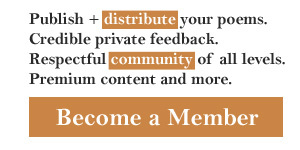This is an analysis of the poem Husker Du I Høst that begins with:
Husker du i høst, da vi hjemad fra marken gik,
vendte du imod mig et spørgende blik....
Elements of the verse: questions and answers
The information we provided is prepared by means of a special computer program. Use the criteria sheet to understand greatest poems or improve your poetry analysis essay.
- Rhyme scheme: XXaaBB XXXcBB XXcXBB XXXXDD
- Stanza lengths (in strings): 6,6,6,6,
- Closest metre: iambic tetrameter
- Сlosest rhyme: no rhyme
- Сlosest stanza type: tercets
- Guessed form: unknown form
- Metre: 1001111101101 10101111 111111 111101 111101101 111101101 1001101110101 110100011 111101 111111 111101101 111101101 100110110111 11101011001 111111 101111 111101101 111101101 111011110101 1010111011 111111 1110 1111011001 1111011001
- Amount of stanzas: 4
- Average number of symbols per stanza: 211
- Average number of words per stanza: 45
- Amount of lines: 24
- Average number of symbols per line: 34 (medium-length strings)
- Average number of words per line: 8
Mood of the speaker:
The speaker asks many questions. Perhaps, he or she is in confusion.
The author used lexical repetitions to emphasize a significant image; du, mig, hvad are repeated.
The poet used anaphora at the beginnings of some neighboring lines. The same word sig is repeated.
The author used the same word husker at the beginnings of some neighboring stanzas. The figure of speech is a kind of anaphora.
There is a poetic device epiphora at the end of some neighboring lines da, nu are repeated).
The poet repeated the same word da at the end of some neighboring stanzas. The poetic device is a kind of epiphora.
The literary device anadiplosis is detected in two or more neighboring lines. The word/phrase s connects the lines.
If you write a school or university poetry essay, you should Include in your explanation of the poem:
- summary of Husker Du I Høst;
- central theme;
- idea of the verse;
- history of its creation;
- critical appreciation.
Good luck in your poetry interpretation practice!
Pay attention: the program cannot take into account all the numerous nuances of poetic technique while analyzing. We make no warranties of any kind, express or implied, about the completeness, accuracy, reliability and suitability with respect to the information.
More information about poems by Carl Ploug
- Analysis of Slaget Ved Slesvig
- Analysis of Ved Istedløvens Afsløring
- Analysis of En Sommeraften Silde

